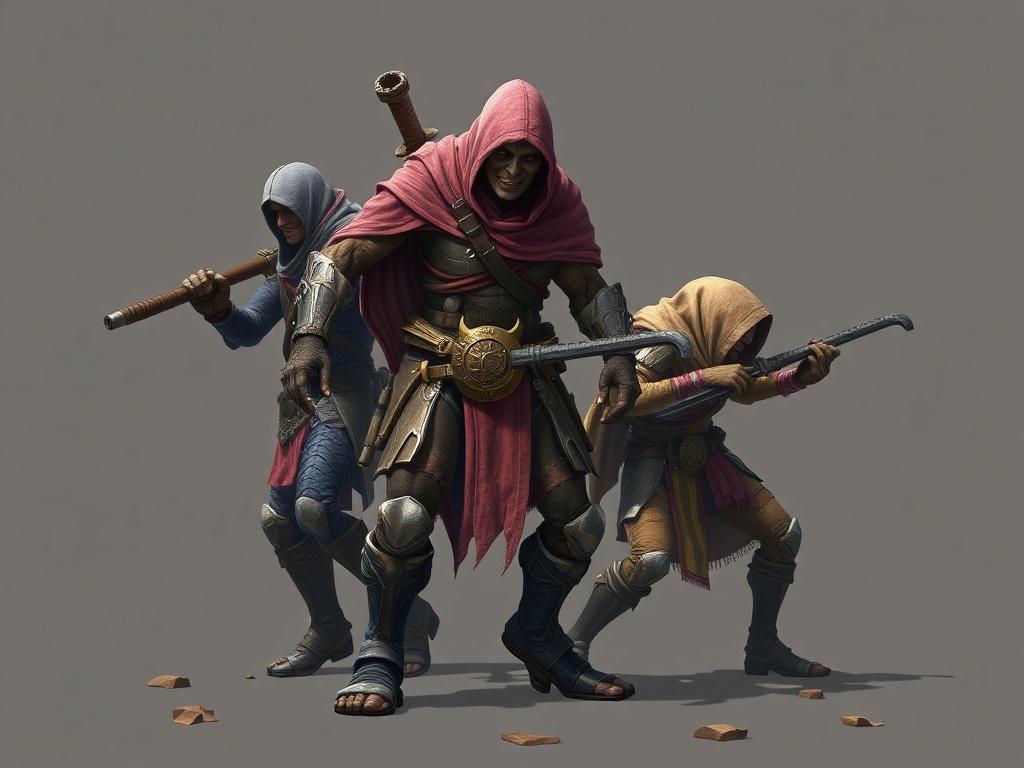Walk into any online game lobby, virtual world, or streaming platform and you’ll see them: colorful jackets, flashy weapon finishes, animated emotes, and custom avatars. These are skins in CSGORUN — visual overlays and cosmetic items that change the look of a character, weapon, or user interface without affecting core gameplay. For many people, skins started as simple personal flair. Today they have become a cultural phenomenon, a speculative market, a creative outlet for designers, and a complicated ecosystem full of opportunities and pitfalls. Whether you’re a curious newcomer or someone who already has a favorite loadout, this article will take you through what skins are, how they work, why they matter, and how to navigate the scene safely and smartly.
What exactly are skins?
At the most basic level, a skin is a cosmetic modification: a texture, model, or animation applied to an in-game object or avatar. Unlike upgrades that change a weapon’s damage or a character’s abilities, skins are purely visual. They let players express personality — from a minimalist matte finish to a neon-infused, limited-edition masterpiece. Skins can be permanent cosmetics that you own forever, time-limited seasonal rewards, or even temporary boosts tied to events. The variety is staggering: clothing, weapon wraps, vehicle decals, emotes, sound packs, and full character re-skins are all part of the wider skin family.
A short history: how skins evolved into a phenomenon
Skins didn’t appear overnight. Early games offered simple recolors as rewards. The leap to a booming skin economy happened with a few milestones: the introduction of tradeable items, communities exchanging and showcasing rare cosmetics, and marketplaces that allowed buying and selling. Games like Counter-Strike and Team Fortress pioneered rarity tiers and drop systems, while titles like Fortnite popularized skins as part of a live-service model, using them to monetize free-to-play experiences. Over time skins became collectibles, with some rarities fetching surprising prices. Streamers and influencers helped accelerate demand; viewers wanted to emulate the looks they saw on screen, and developers leaned into that desire with collaborations, celebrity drops, and seasonal lines.
How skins work technically
Under the hood, skins are files — textures, shaders, models — that the game engine loads and maps onto objects. Depending on the platform, skins may be stored locally on your device, on developer servers, or in player inventories held in a centralized or decentralized ledger. Rarity, provenance, and ownership metadata are often tracked by the game or platform. More recently, blockchain-based skins have emerged, where ownership is recorded on a distributed ledger as NFTs. This introduces new mechanics like provable scarcity and cross-platform transfers, but also legal and environmental controversies. Regardless of the technical method, the user experience is the same: equip a skin, and your in-game identity changes visually.
Types of skins and what makes them valuable
Not all skins are created equal. Several factors influence a skin’s desirability and value:
- Rarity: Limited drops or rare palettes naturally fetch higher demand.
- Aesthetic appeal: Unique art direction, animations, and cohesion with popular themes matter.
- Provenance: Who created it, whether it was part of a famous event, or owned by a celebrity player can boost value.
- Condition: Some games feature wear-and-tear systems (like “float” values) that make some copies of the same skin more valuable.
- Utility perception: Even if skins are cosmetic, players often assign prestige or implied skill to certain skins, making them socially valuable.
![skins in games skins in gamesфото]()
Here’s a quick comparison table of common skin ecosystems so you can see how they differ at a glance.
| Platform / Game | Common Skin Types | Tradeability | Notable Traits |
|---|---|---|---|
| Counter-Strike (CS:GO) | Weapon finishes, stickers | High (Steam marketplace and third-party) | Rarity tiers, wear values, high-value collectibles |
| Fortnite | Character skins, emotes, gliders | Limited (mostly non-tradable, seasonal) | Collaborations, celebrity skins, live events |
| Dota 2 | Character cosmetic sets | High (Steam inventory) | Complex item sets, tradeable marketplace |
| Roblox | Avatar accessories and clothing | Variable (creator marketplace) | User-created economy, accessible design tools |
| Blockchain / NFT skins | Any cosmetic recorded as tokenized asset | High (blockchain transfers) | Provenance, cross-platform promise, market volatility |
How to acquire skins: step-by-step
If you’re new and want to get into skins, the path you choose depends on which ecosystem you prefer. Here’s a simple step-by-step guide to common ways people acquire skins:
- Play and earn: Many games drop skins as rewards for playtime, achievements, or seasonal challenges. Participate in events and complete challenges to earn cosmetics without spending money.
- Purchase from the in-game shop: The most straightforward method is buying skins directly with in-game currency or real money during rotations or limited-time sales.
- Open crates/loot boxes: Some games sell loot boxes with randomized contents. Remember that luck plays a role, and odds are often biased toward common items.
- Trade with other players: In trade-enabled games you can swap items with others. Build trust through established marketplaces or on-platform trading systems.
- Buy on marketplaces: Third-party or official marketplaces let you buy specific skins. Compare prices, fees, and seller reputation before purchasing.
- Create your own: In platforms that allow user-generated content, learn the tools, design a skin, and list it for sale or give it away.
Trading, markets, and the economics of skins
Skins in https://cs2run.gg/ developed into a speculative market because they’re scarce, desirable, and sometimes tradable. Marketplaces set prices based on supply, demand, and perceived prestige. Sometimes a skin gains value unexpectedly — because a streamer used it, because an item drop rate was miscalculated, or because a skin was tied to a one-time event. This creates win-win scenarios and also speculative bubbles. For casual players, economics matter mainly when buying or selling: watch fees, understand platform rules, and research market prices. For traders and investors, skins are a risky asset class: they can be liquid but volatile. Taxes, legality of trading, and regional regulations can also affect how you handle high-value items.
Safety: avoiding scams and protecting your inventory
The popularity of skins has attracted scammers. From phishing links that steal credentials to fake marketplaces and rigged trades, the risks are real. Protect yourself by using official marketplaces when possible, enabling two-factor authentication, avoiding trade links from strangers, and never sharing account passwords. Here are practical safety tips:
- Enable two-factor authentication and strong passwords.
- Use official or well-reviewed marketplaces with clear dispute processes.
- Never click suspicious links promising free rare skins.
- Verify trades in-platform before confirming, and be cautious with middlemen.
- Keep records of purchases and receipts for high-value transactions.
Designing skins: an opportunity for creators
Skins are more than commerce; they’re an artistic medium. Designers and 3D artists can build portfolios by creating standout cosmetics. Many games and platforms offer modding tools and templates to get started. Key design tips include focusing on silhouette readability, color harmony, and thematic relevance to the base game. If you plan to sell, research what works in that community: some games favor realistic military palettes, others reward bold, stylized aesthetics. Collaborations with influencers, limited-run drops, and storytelling around a skin’s theme can increase interest and value.
Legal, ethical, and social considerations
As skins grew in monetary importance, legal and ethical questions cropped up. Should in-game items be treated like property? What about minors buying skins with real money? How do developers balance monetization with player satisfaction? Regulators in some countries have started examining loot boxes as gambling. Blockchain skins raise intellectual property and environmental concerns. Socially, skins can be status symbols that create divisions in communities, but they can also be equalizers in free-to-play games where everyone can access the same cosmetics if they’re willing to play or grind. Developers must navigate fairness, transparency in drop rates, and responsible marketing.
Future trends: where skins might go next
The future of skins will likely be shaped by technology, culture, and regulation. Expect more cross-platform interoperability efforts — especially if blockchain systems mature and game studios agree on standards. Augmented reality may bring skins into the physical world, letting you see cosmetics through AR overlays at events or in social apps. Procedural and AI-assisted design might produce near-limitless variations, but that could dilute scarcity unless controlled. Collaborations with fashion houses, music artists, and entertainment franchises will expand the cultural reach of skins beyond gaming into mainstream identity and storytelling.
Conclusion
Skins (скины) are a fascinating intersection of art, technology, community, and commerce — small visual items that carry outsized meaning. They let players express themselves, create markets and careers, and push the boundaries of how we think about ownership and value in virtual spaces. Whether you treat skins as personal flair, collectible investments, or creative projects, understanding their mechanics, risks, and cultural impact helps you participate more thoughtfully. Play smart, protect your accounts, appreciate the creativity behind great designs, and remember that at their best skins add personality and fun without replacing the core reasons we play games: connection, challenge, and joy.

